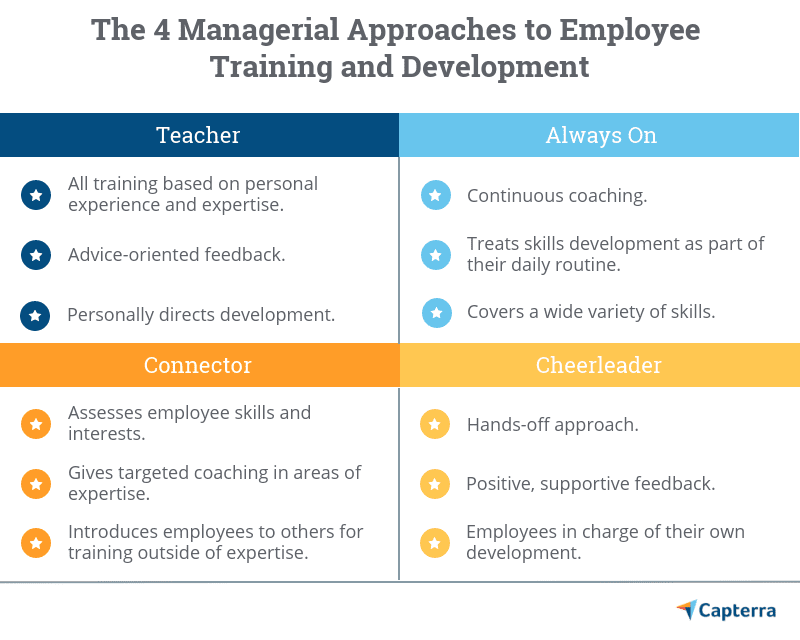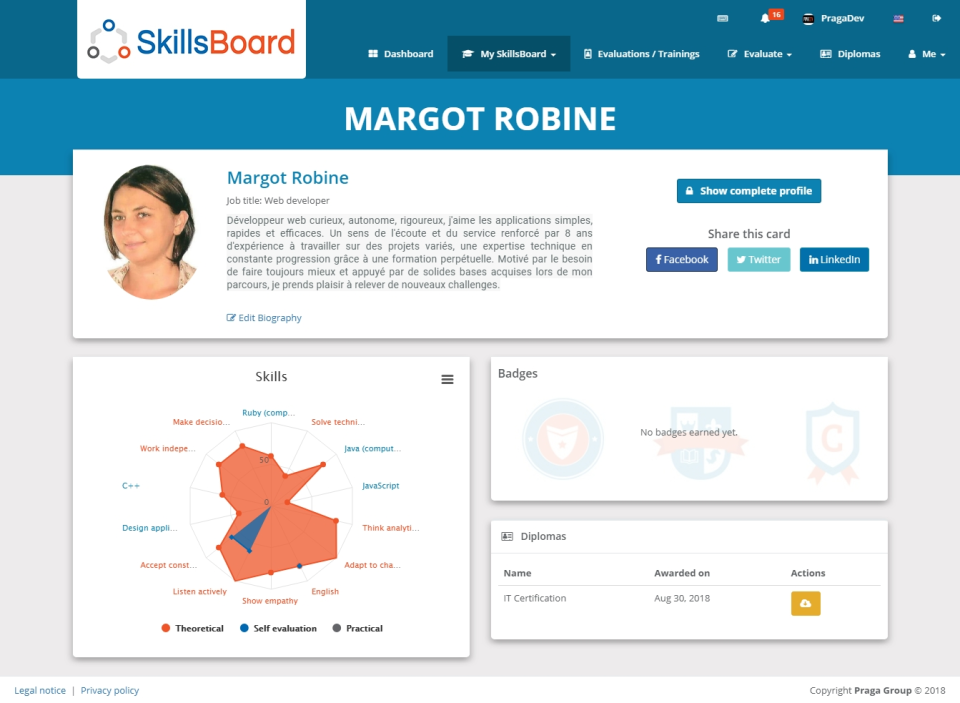Employees under Connector Managers are three times more likely to be high performers. What's their secret?

How important are managers to the ultimate success of your business? Reader, let me count the ways:
70% of the variance in a team's engagement level is dependent on their manager.
When workers move from an average manager to a high-quality manager, their productivity improves by as much as 50%.
Nearly two out of every three workers have left a job, or considered leaving, because they didn't like their manager.
Every HR department needs to figure out how to hire and develop good managers, or risk watching their best workers walk out the front door.
But what does a “good" manager look like in a modern business and what traits or skills do they have in common? When Gartner surveyed 7,300 employees and more than 300 HR executives to find out, their conclusion was clear (full research available to Gartner clients):
Connector Managers—those who take “an employee-centric coaching approach and use their broader network to meet employees' coaching needs"—improve employee performance by up to 26% and triple the likelihood their employees will be high performers.
We're going to get into how Connector Managers achieve these amazing results and how you can have more of them in your business. But first, let's back up and talk about how managers approach training and development.
4 approaches to employee training and development
One of the most critical responsibilities that managers have is coaching and developing their direct reports. Studies show that workers really care about this stuff (especially young, Gen-Z workers): Nearly 60% of the difference in employee perceptions of their manager can be explained by whether they provide “opportunities to develop the technical, management, and leadership skills necessary for employees' future success."
However, not all managers handle this task the same way. In fact, Gartner identifies four common but distinct approaches to employee coaching and development: teacher, always on, connector, and cheerleader.

(Source—full research available to Gartner clients)
The results of these different approaches vary drastically. For example, the teacher, who gives advice based solely on their own expertise and experience, improves employee performance by only 7%. The cheerleader, who provides a supportive environment but ultimately leaves workers to their own developmental devices, improves performance by only 9%.
Always-on managers, who continuously coach their workers on a daily basis, actually hinder employee performance by up to 8%. These managers are prone to giving “misguided, irrelevant, or too much feedback."
Connector Managers, on the other hand, can improve performance by up to 26%—the best of any of these approaches—by taking an active, employee-centric role in connecting workers to the right expert or resource that meets their needs.
Here's how they do it.
3 tactics Connector Managers employ to get the best results
Think of a Connector Manager as a coaching concierge. Rather than putting all of the training and mentoring demands on their own shoulders, or sitting back and letting employees figure it out themselves, Connector Managers listen and guide workers to the resources they need.
They do this through three primary tactics:
1. They diagnose individual coaching needs
Connector Managers understand that there is no single underlying reason why an employee lacks a necessary skill. For some, it could be that they don't understand the topic completely. For others, it could be a lack of resources or a poor learning environment. Another worker may simply not have the motivation to learn.
By listening and taking the time to understand their workers' learning preferences and needs, Connector Managers are able to figure out what training solution would best cure their woes.
2. They empower peer-to-peer development on their own team
The best coach for an employee in a certain area may be their own coworker, but they don't even know it. Connector Managers understand this and work to create transparency on their teams to foster more peer-to-peer development.
They do this by understanding every worker's self-ascribed strengths and weaknesses and how their team interacts with one another, in order to identify areas where they can push for more proactive collaboration and learning. It's a win-win: Managers spend less time on coaching, and employees get effective training from someone in their peer group who knows what they're talking about.
3. They build high-quality development connections
Once they've exhausted the wealth of knowledge on their own teams, Connector Managers use their high-quality connections with other team leaders in the organization—or even experts outside of the organization—to fulfill their workers' coaching needs.
Connector Managers do this by creating and maintaining a large but diverse network of skills and knowledge over their career that they can draw from when needed.
You need more Connector Managers. Here's how to get them.
Connector Managers are the key to growing and maintaining the modern workforce. But who coaches the coach? Who develops the developer?
Ultimately, the responsibility falls on HR to guide the organization on how to hire the right people and train them into Connector Managers. Here're some tips for doing just that:
Hire managers with diverse backgrounds. Managers from limited networks have limited external knowledge to draw from to help their teams. If you've been penalizing applicants because their work history is too varied, stop. That diverse background could be the key to connecting your employees to the skills and knowledge they need.
Build skills profiles of all your employees. In order to promote more peer-to-peer development, managers need a deep knowledge of their team's strengths and weaknesses. Using a performance management system, managers can develop skills profiles for all their workers that create more skills transparency and make it easy to identify areas for collaboration.

An example of an employee skills profile in SkillsBoard (Source)
Tear down organizational silos. Different departments in your organization may not have a need to work together all that often, but that doesn't mean they can't learn from one another. Whether through lunch-and-learns, cross-department outings, or other means, ensure that managers have the ability to grow and develop their coach network.
What other skills do the best managers have in common? Check out "5 People-Manager Skills to Develop at Your Small Business" to find out.